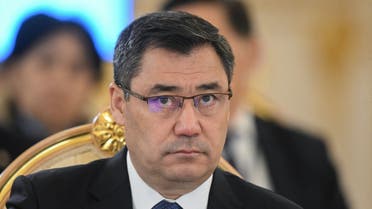
- As the global demand for minerals continues to rise, it is crucial to strike a balance between profit-driven mining activities and safeguarding our environment. Through the exploration of sustainable practices, technological advancements, collaborative initiatives, and regulatory frameworks, this article underscores the urgent need to prioritize responsible mineral extraction. By adopting sustainable practices, we can ensure the preservation of our planet's natural resources for future generations while still meeting the needs of industry and society.
The mineral industry in the Middle East and North Africa (MENA) region is of significant economic importance, given the abundance of mineral resources in the area. However, effective regulation is crucial to ensure sustainable development, environmental protection, and the attraction of foreign investment. This investigative article delves into the mineral industry regulations in the MENA region, with a particular focus on Saudi Arabia and other countries in the Gulf Cooperation Council (GCC). By examining various sources [1][2][3][4][5][6][8][9][11][12], this article aims to provide insights into the regulatory frameworks, challenges, and potential improvements in mineral industry regulations within the MENA region.
1. Mineral Policy in the Gulf Cooperation Council (GCC) Countries:
The Gulf Cooperation Council (GCC) countries, including Saudi Arabia, have been actively exploring mineral development and investment policies to diversify their economies and attract foreign investment. Saudi Arabia, in particular, has emphasized transparent and investor-focused mining laws as an example for the region [1][2]. Efforts have been made to evaluate factors such as geological, political, financial, regulatory, operational, fiscal, social, environmental, and marketing criteria in order to enhance the mineral policies [1][2]. The development of comprehensive and modern legislation, such as the Mining Investment Law, has been instrumental in attracting private investment and promoting sustainable practices [5].
2. Saudi Arabia’s Comprehensive New Mineral Regulatory Regime:
Saudi Arabia has recently implemented a comprehensive new mineral regulatory regime to enhance the governance and transparency of the sector. The regime aims to attract foreign investment, promote sustainable practices, and optimize the utilization of mineral resources [5][8].
Key features of Saudi Arabia’s new mineral regulatory regime include:
a. Mining Investment Law: The Mining Investment Law provides a legal framework for mining activities in Saudi Arabia. It offers incentives for domestic and foreign investors, simplifies licensing procedures, and establishes transparent bidding processes for exploration and mining rights [5].
b. Regulatory Authority: The regime establishes a dedicated regulatory authority, the Saudi Geological Survey (SGS), responsible for managing the mineral resources and overseeing exploration and mining activities. The SGS aims to enhance geological data, improve mining operations, and support sustainable development in the sector [8].
c. Environmental and Social Considerations: The new regime emphasizes environmental and social considerations in mineral activities. It requires mining companies to prepare environmental and social impact assessments, implement mitigation measures, and comply with international best practices in environmental management [5].
d. Fiscal Regime: Saudi Arabia’s mineral regulatory regime includes a competitive fiscal framework to attract investment. It offers tax incentives, royalty rates based on the value of production, and a streamlined taxation process for mining companies [8].
e. Transparency and Governance: The regime promotes transparency and good governance in the mineral sector. It requires public disclosure of mining contracts, financial statements, and production data to ensure accountability and combat corruption [8].
3. Challenges and Potential Improvements:
Despite the progress made in mineral industry regulations in the MENA region, several challenges persist. These include:
a. Capacity Building: Building technical and regulatory capacity is crucial to effectively implement and enforce mineral industry regulations. Investing in training programs, technology transfer, and knowledge sharing can address this challenge [6].
b. Stakeholder Engagement: Involving all relevant stakeholders, including local communities, indigenous groups, and environmental organizations, in decision-making processes can improve the social acceptance and sustainability of mining projects.
c. Environmental Management: Ensuring effective environmental management and monitoring throughout the mining lifecycle is essential. Strengthening environmental regulations, implementing robust monitoring systems, and encouraging the adoption of sustainable mining practices can mitigate negative environmental impacts [4].
d. Governance and Transparency: Enhancing governance structures and promoting transparency in the mineral sector can help prevent corruption and ensure fair and equitable distribution of benefits. Implementing effective regulatory mechanisms, disclosing financial information, and strengthening anti-corruption measures are vital for improving governance [4].
e. Legal Frameworks: Continuously reviewing and updating legal frameworks and regulations to address emerging challenges and align with international best practices is essential. This includes addressing issues related to licensing, royalties, environmental protection, and community engagement [4].
In summary, Saudi Arabia’s new mineral regulatory regime represents a significant step toward enhancing the governance, transparency, and attractiveness of the country’s mineral sector. By providing a robust legal framework, promoting sustainability, and offering fiscal incentives, the regime aims to attract investment and optimize the utilization of mineral resources. However, ongoing efforts are required to address challenges such as capacity building, stakeholder engagement, environmental management, governance, and legal frameworks to ensure the long-term success and sustainability of the mineral industry in the region.
4. Social and Economic Development:
Mining projects have the potential to contribute to local and national economic development by generating employment opportunities and stimulating economic growth. However, ensuring that the benefits of mining activities are shared equitably among communities and that local economies are diversified to reduce dependence on the mineral sector is a challenge that needs to be addressed. Governments can consider implementing mechanisms to promote local procurement, job creation, and skills development to maximize the socio-economic benefits of mining [4].
5. Indigenous and Community Rights:
Protecting the rights of indigenous communities and local populations is crucial. Governments should engage with these communities in a meaningful and inclusive manner, respecting their rights, traditional knowledge, and cultural heritage. It is essential to conduct thorough social impact assessments, implement appropriate compensation and benefit-sharing mechanisms, and establish grievance mechanisms to address community concerns [4].
6. Technology and Innovation:
Embracing technological advancements and innovation can help overcome some of the challenges in the mineral industry. Adopting advanced exploration techniques, efficient mining practices, and sustainable processing methods can improve resource recovery, reduce environmental impacts, and optimize operational efficiency. Governments can support research and development initiatives and promote collaboration between academia, industry, and technology providers to foster innovation in the sector [4].
7. International Cooperation:
Enhancing international cooperation and knowledge exchange can be beneficial for the MENA region’s mineral industry. Collaborating with international organizations, sharing best practices, and learning from the experiences of other countries can help address common challenges and foster sustainable development. Participating in regional and global initiatives on responsible mining can also contribute to improved practices in the sector [4].
8. Continuous Monitoring and Evaluation:
Regular monitoring and evaluation of the implementation of mineral industry regulations are essential to ensure their effectiveness and identify areas for improvement. Governments can establish robust monitoring systems, conduct periodic reviews, and engage independent experts to assess the environmental, social, and economic impacts of mining activities. This information can guide policy adjustments and support evidence-based decision-making [4].
By addressing these challenges and working towards potential improvements, the MENA region can create a conducive environment for sustainable and responsible mineral development, leading to economic growth, social well-being, and environmental protection.




